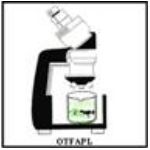AGLS 6502 Glossary of Digestive Terms
AGLS 6502 List of exam example questions
1] List and describe the four (4) different Global Approaches at Wildlife Conservation and Management.
2a] Explain the following terms as they relate to Neo-tropical Animals
- Conservation
- Management
- Production
- Utilization
- Extinction
- Viable populations
2b] Explain the difference between Neo-tropical animal Conservation and Management.
3] Describe the different approaches that have been taken and listed to describe the Role and Value of Animal Wildlife.
4] Explain the “Conceptual Framework for Developing Intensive Systems of Animal Production”.
5a] List and describe four (4) different types of Zoos.
5b] List and describe the present and future roles of Zoos.
5c] Explain the role and importance of the Kitchen in the Zoo.
6] Compare and contrast the Intensive Production Systems of a Terrestrial Mammal of your choice with that of the Tilapia or the Cascadura.
7a] List and Describe the Components of a good Ecotourism Location.
7b] List and describe the Issues surrounding Ecotourism.
7b] You experienced an Eco-tourism camp and location, critically evaluate this facility as an eco-tourism site.
8a] Explain what is CITES
8b] How does CITES Operate?
9] List and describe the constraints and hurdles for the expansion and development of Neo-tropical Animal Wildlife Production.
10] Explain what you understand to be the Synergism between Neo-tropical Animal Conservation, Management, Production and Utilization.
11a] What is a Collared Peccary?
11b] List and describe some of its unique biological features.
11 c] What are the key animal management challenges for the intensive production of this animal?
12a] List the venomous snakes of Trinidad?
12b] What are the main features of each one?
12c] How would you go about having a friendly relationship with the non-venomous snakes of Trinidad and Tobago?
13] Answer both parts of this question.
a) Why is a survival kit necessary when you are working with neo-tropical animals?
b) List and describe the components of a Survival Kit.
c) What other items of clothing and equipment must you have besides the “Survival Kit” when working in the field?
14] List and describe the constraints and hurdles for the expansion and development of Neo-tropical Animal Wildlife [Non-domestic] Production.
15] Answer all parts of this question.
a) List and the different approaches towards “Wildlife” Conservation.
b) Why should the term “Wildlife” not be used in the Central and South America and the Caribbean context, and what term would you suggest?
c) What historical argument could you present to justify Latin American and the Caribbean investment in “Wildlife” Conservation, Production and Utilization?
